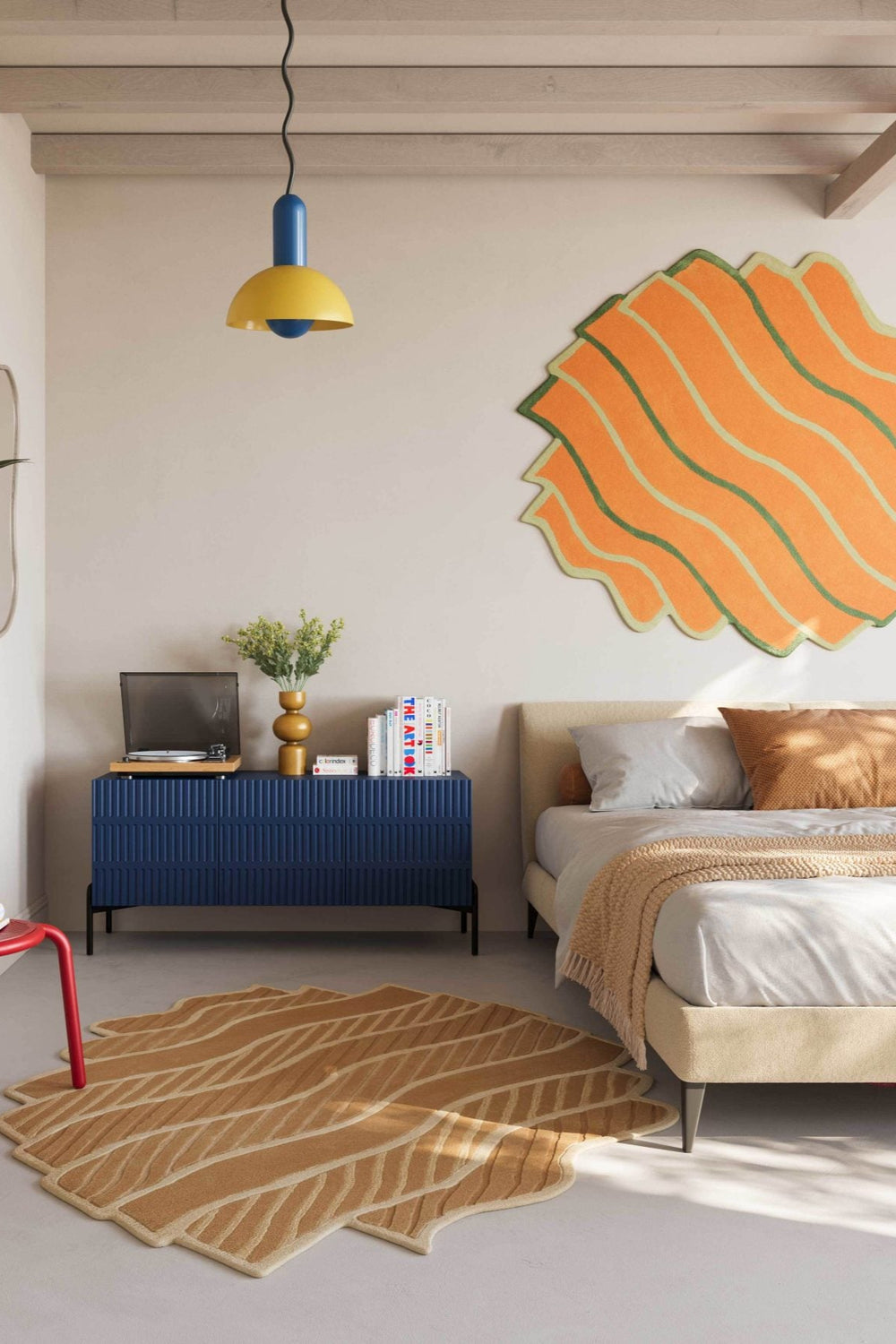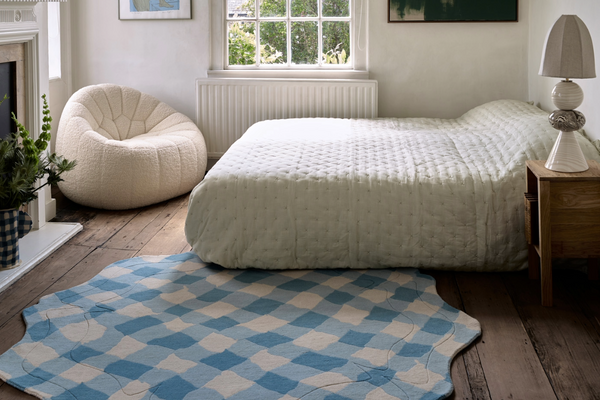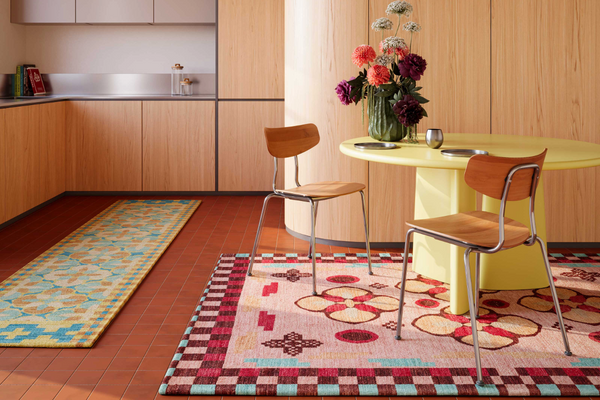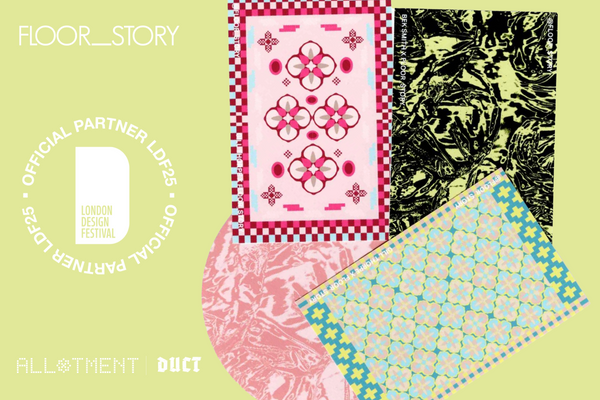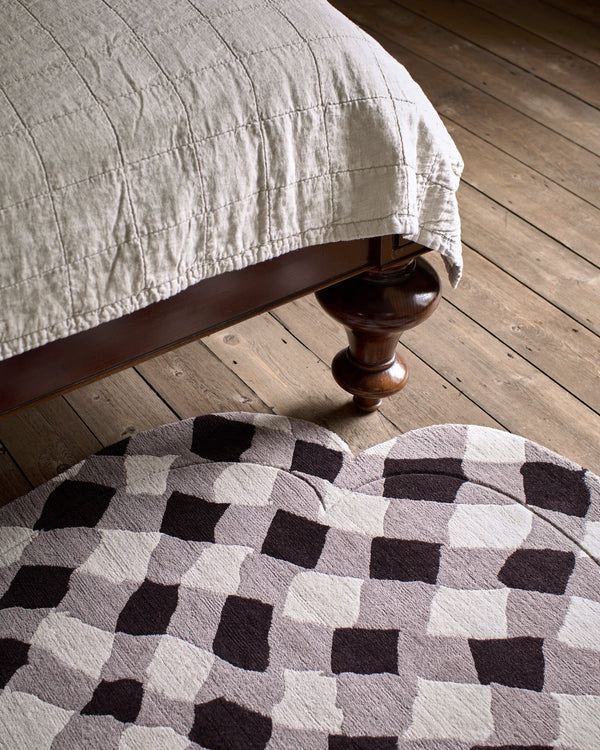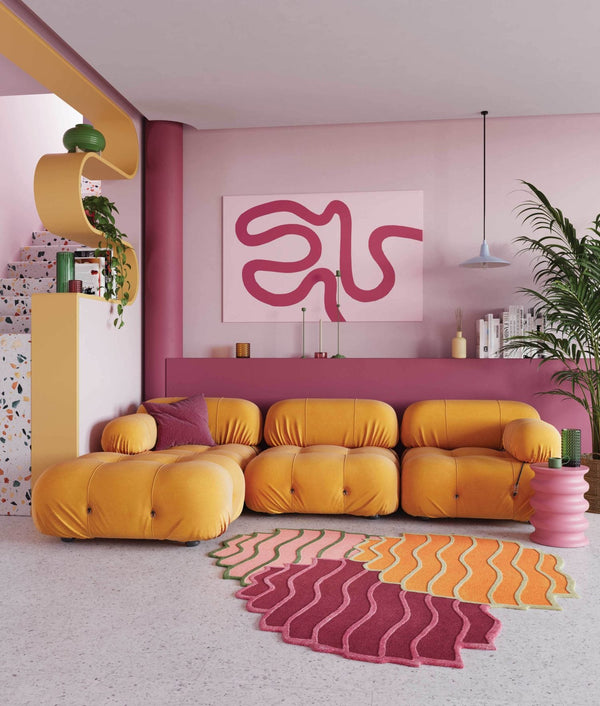
A Guide to Styling Shaped Rugs in Your Space
Break the rules
Tired of the same old rectangles and squares?
We get it. While traditional rugs have their place, sometimes a project calls for something a little more playful and unexpected. That’s where shaped rugs come in. They’re a fantastic way to inject personality, define zones, and add an artistic touch to any room.
Let’s explore how you can use these unique pieces to elevate your designs, both on the floor and on the wall.

Why Choose a Shaped Rug?
Before we dive into styling, let's talk about why a shaped rug is such a great choice for your projects.
- Breaks the Mould: Shaped rugs instantly disrupt the straight lines and hard angles of a room. This creates visual interest and a more dynamic, flowing feel.
- Defines Unique Spaces: Use a shaped rug to carve out a specific area, like a reading nook or a creative corner in a commercial space. Its unconventional outline naturally separates it from the rest of the room without needing walls.
- Adds an Artistic Element: Many shaped rugs are like functional pieces of art. Their bespoke forms and intricate designs can serve as a focal point, telling a story and reflecting a client's unique style.
- Enhances Themes: Whether you’re working with a nature-inspired biophilic design or a whimsical, abstract concept, a shaped rug can perfectly complement and enhance the overall theme.
Shaped Rugs
Henry Holland
Plat in Blue
Kangan Arora
Casa in Black and Cream
Henry Holland
Rondelle in Green
Emily Forgot
Aldo Pink Multi
Emily Forgot
Amedee in Yellow Multi
2LG Studio
Archway Lilac
FLOOR_STORY Selects
Aris in Teal
Kangan Arora
Casita in Burnt Orange
Kitty Joseph
Chroma Yellow
Kitty Joseph
Chroma Primary
John Booth
Cosmos Flower
Kangan Arora
Harlequin Runner
Henry Holland
I Feel Love Orange
Henry Holland
I Feel Love Tan
Carmellia Indrawati
Marmalade in Lime
Flock
Northmore Tufted Circle
Henry Holland
Pass The Plate Green
2LG Studio
Portal in Yellow Flatweave
Henry Holland
Ravier in Green
Henry Holland
Rondelle in Blue
Styling Shaped Rugs
Placing a shaped rug on the floor is a surefire way to make a statement. Here are a few practical tips to help you get it right.
1. Let the Rug Guide the Layout
Instead of forcing a shaped rug into a pre-existing furniture arrangement, let its form inspire the layout. Arrange seating around the curves of the rug to create a cozy and conversational grouping. For example, a kidney-shaped rug works beautifully with a curved sofa, creating a soft, organic feel.

Harlequin Runner - Kangan Arora x FLOOR_STORY
Shop The Rug2. Room to play
Finding the right symmetry with a shaped rug and its surrounding furniture really is key. Asymmetry works really well, and the shaped nature of the rug gives the versatility of either being under furniture or simply filling an empty space.
Think scale, do you want this rug to cover an entire area or do you want it to act as a smaller floor accessory to bring a hint of joy? Oh, and remember that doors will need space to open and close, a common rookie error.

Pass the Plate - Henry Holland Studio x FLOOR_STORY
Shop The Rug3. Use It to Create Flow
In open-plan spaces or long hallways, a series of smaller shaped rugs or one long, meandering one can guide the eye and direct foot traffic.
Think of them as stylish stepping stones that lead from one area to another, creating a subtle but effective path through the space.

Construct - Emily Forgot x FLOOR_STORY
Shop The Rug4. Don't Be Afraid of Asymmetry
The beauty of a shaped rug lies in its irregularity. Embrace asymmetry in your furniture placement. You don’t need to center everything perfectly. An off-center placement can feel more modern and relaxed, adding to the rug’s playful character.

Splash - Amechi Mandi x FLOOR_STORY
Shop The RugThinking Outside the Box: Rugs as Wall Art
Who says rugs belong only on the floor? A beautifully crafted shaped rug can double as a stunning piece of wall art. This is a brilliant solution for adding texture, color, and acoustic benefits to a room.
Why Hang a Rug on the Wall?
- Adds Texture and Warmth: A textile on the wall instantly softens a space, making it feel warmer and more inviting than a traditional painting or print.
- Improves Acoustics: In rooms with high ceilings or hard surfaces, a wall-hung rug can help absorb sound, reducing echo and creating a more comfortable environment. This is especially useful in commercial projects like offices or restaurants.
- Creates a Powerful Focal Point: A large, boldly designed shaped rug hung on a prominent wall becomes an undeniable centerpiece. It’s a great way to add high impact with a single design element.
Tips for Hanging a Shaped Rug
- Choose the Right Wall: Select a wall that has enough space to let the rug breathe. A large, blank wall behind a sofa or in a minimalist entryway is a perfect canvas.
- Consider the Weight: Ensure you have the proper hardware to support the rug's weight. For heavier, hand-knotted or tufted pieces, you may need a sturdy rod or a professional mounting system. Lighter, flat-woven designs might be manageable with more discreet solutions like Velcro strips or nails attached to a wooden batten.
- Positioning is Key: Hang the rug at eye level, just as you would with a large piece of art. This ensures it's appreciated as an artistic feature rather than just a floor covering in an odd spot.
Whether on the floor or on the wall, a shaped rug is a versatile and exciting tool for any designer. It’s an opportunity to challenge conventions, introduce new forms, and craft spaces that are truly memorable and bespoke.
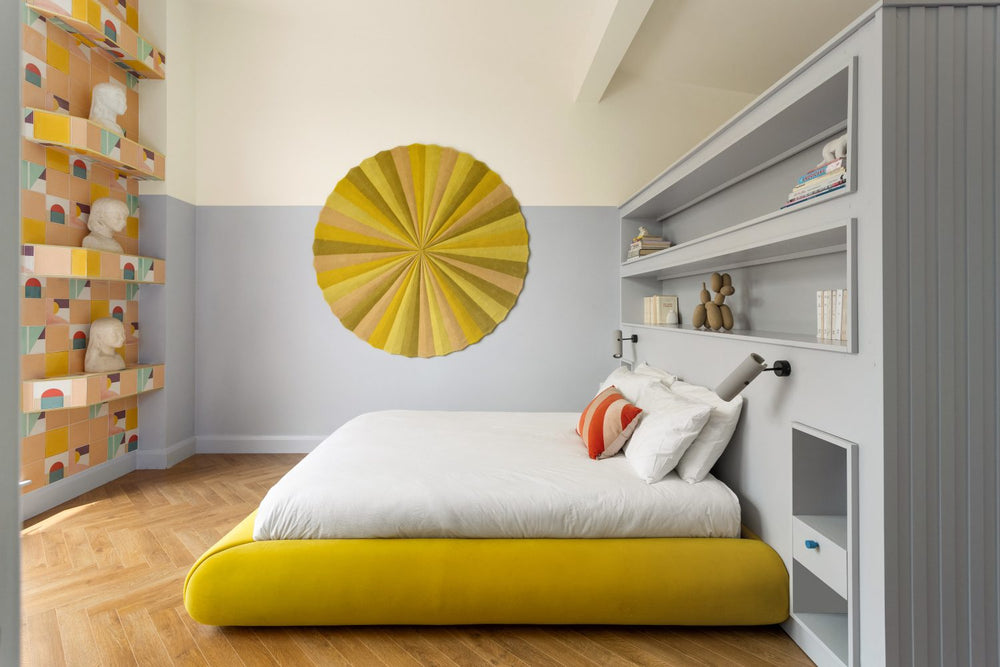
Rug by Kitty Joseph, Interior by InSpace
Shop the rugMore Inspiration
Spaces to help get ideas flowing.

Marmalade by Carmellia Indrawati x FLOOR_STORY
Shop This Rug
